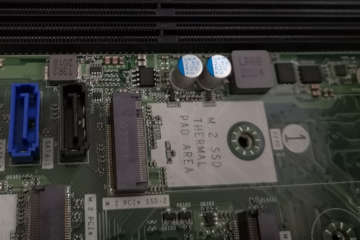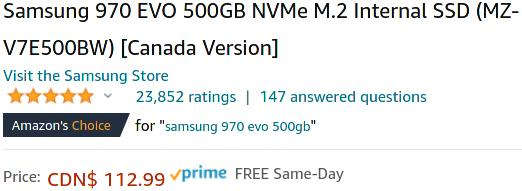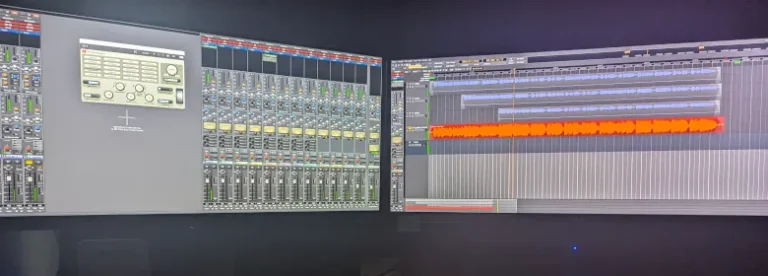UPDATE January 31st 2024
It’s been a while since I have upgraded my hard drive and just a few weeks ago, I was once again thinking of adding some more SSD storage to my devices, I couldn’t help noticing that the same Samsung 970 SSD I bought back then is just as expensive as it was when I bought it. I still buy most of my parts from amazon.ca but CanadaComputers.com is equally cheap.

Last night, I’ve replaced a slow 5400 RPM hard drive with an Samsung 970 MVMe M.2 SSD. The whole process took maybe 10 minutes and after I installed Manjaro, the computer performance was simply mind blowing.
Sadly, our local BestBuy store does not carry the inventory they used to so I turned to Amazon which had a slightly older version of the Samsung 970 EVO NVMe M.2 internal SSD on sale for only CAN $113 plus Tax.
Remove the existing hard drive
In 2021, there is no reason to keep an 5400 RPM hard drive so I removed all SATA cables as well as the mechanism which held the hard drive in place. The result was a much cleaner looking assembly. Inserting the new NVMe SSD stick was easy because Dell included the much talked about thumb screw to secure the drive to the mainboard.

And here are the stats
To get started, I’ve typed this line into the terminal:
sync; dd if=/dev/zero of=tempfile bs=1M count=1024; sync
Which produced this output:
1024+0 records in
1024+0 records out
1073741824 bytes (1.1 GB, 1.0 GiB) copied, 0.596538 s, 1.8 GB/s
The last part which says “1.8GB/s” is what I wanted to know. This means that my new Dell Precision PC with the Samsung EVO NVMe M.2 SSD has a read speed of 1.8 Gb per second.
But how fast does it write?
Before running the next command, I need to clear the cache:
dd if=tempfile of=/dev/null bs=1M count=1024
and:
sudo /sbin/sysctl -w vm.drop_caches=3
Then I type this command into the terminal and press enter:
dd if=tempfile of=/dev/null bs=1M count=1024
Which produces this output:
1024+0 records in
1024+0 records out
1073741824 bytes (1.1 GB, 1.0 GiB) copied, 1.33632 s, 804 MB/s
The average write speed of a 1.1 Gigabyte file is 804 Megabytes per second which is not bad when considering that the drive is encrypted.
Let’s test again but this time with Gnome Disk
As expected, the outcome was the same for writing data. The peek values were around 2690 MB/s with lows of 1345 MB’s based on a sample size of 10 MiB (10,485,760 bytes).
Average access time: 0.03 msec (1000 samples)
SAMSUNG Portable SSD T5
In comparison, my SAMSUNG portable SSD which is connected via USB C reached an “average” write speed of 546.9 MB/s based on 100 samples, 10 MB each.
My Dell graphics workstation runs Linux on a regular M.2 SSD (factory original) and with the same Gnome Disk test, achieves an average read speed of 538.9 MB/s.
Another PC which has a generic brand M.2 SSD reads on average 510 MB/s and my old MSI laptop which I upgraded with an Samsung SATA 256 Gig SSD clocks in at 556 MB/s which surprised me considering that it has been running al day doing its thing.
A little while back, I’ve measured the data transfer speed of my network which also uses some of the above listed equipment.
Thermal pad
I regret not to have ordered a thermal pad which would keep the Samsung EVO NVMe M.2 SSD quite a bit cooler. Next time I order something from Amazon, I will make sure to include a few thermal pad strips. The good thing is that those can always be added later.
Conclusion
I highly recommend upgrading old hard drives with newer much more efficient SSD drives. Even if you have an old computer that does not have M.2 slots, you can still replace the existing hard drive with the SATA version. The difference in performance is instantly noticeable as shown in the laptop benchmark.
The price for a 250 Gig SATA SSD is now around CAN $50 and $80 for a 500 Gig version. YouTube has plenty of videos which show you everything you need to know about upgrading a computer and depending on the model, an online forum will also have plenty of advise. There are no other upgrades that make such a big difference than replacing older hard drives with SSD drives.
If you have questions then fire away. I usually answer the same day. Thank you for reading.

You encrypt the whole drive. Doesn’t that slow it down?
Hey Adam,
The boot process is slightly slower and entering a secure password is tedious but after that you won’t notice that you are working with an encrypted drive.